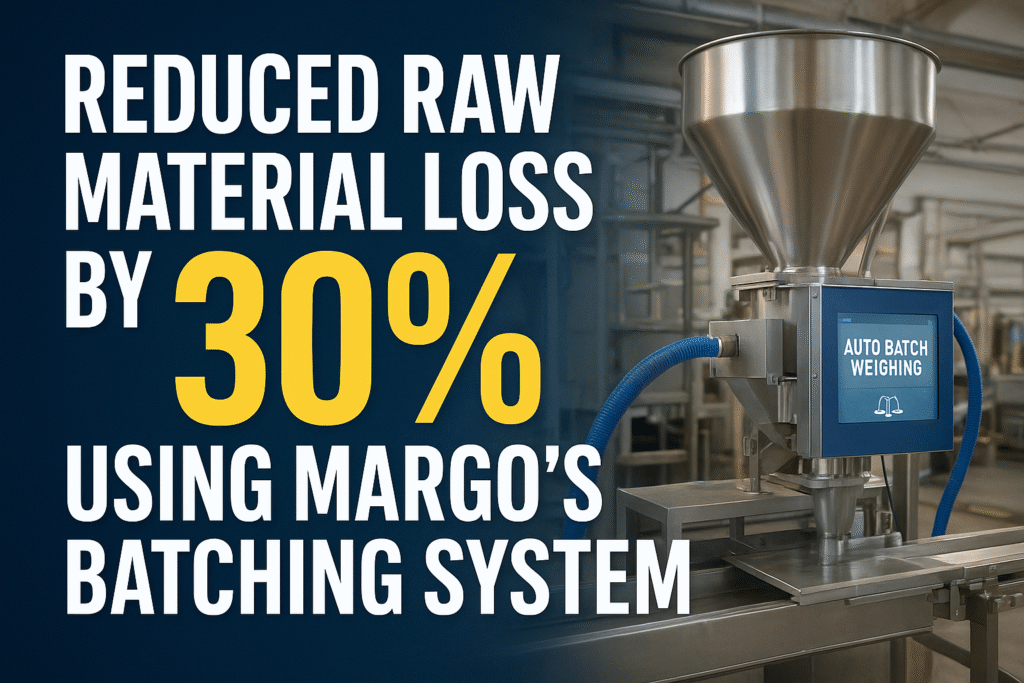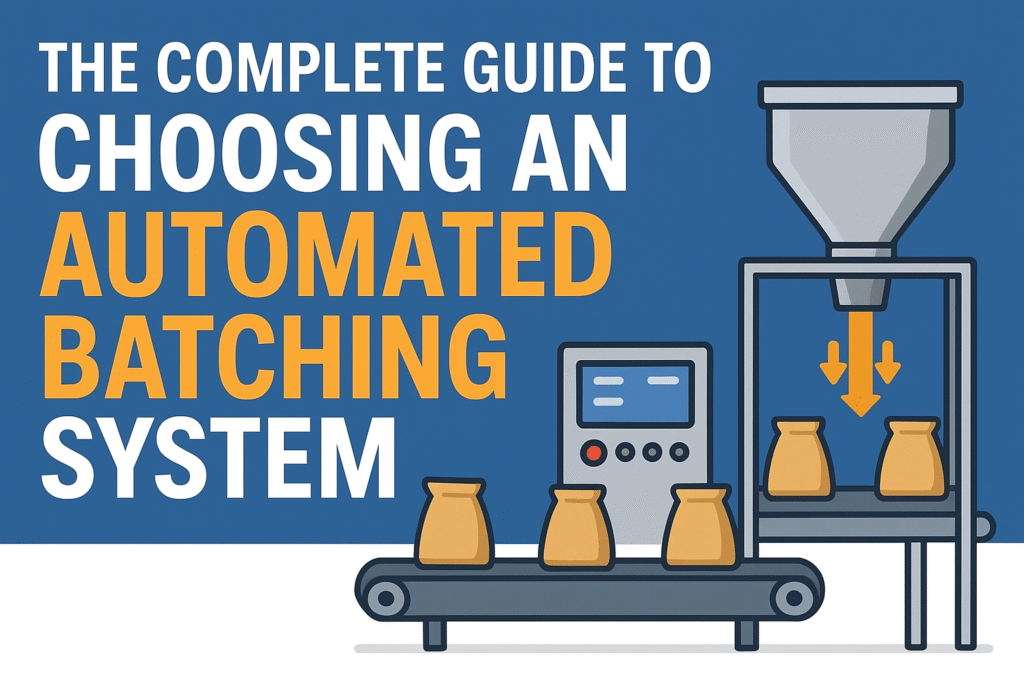
In manufacturing industries such as pharmaceuticals, food processing, and chemicals, raw materials account for a significant portion of production costs. Even small inefficiencies in batching or material handling can lead to substantial losses over time.
Reducing raw material waste is no longer just a cost-saving measure — it’s a critical component of operational efficiency, sustainability, and profitability. Margo Industries has developed a state-of-the-art batching system that allows manufacturers to precisely measure, weigh, and process materials, resulting in a 30% reduction in raw material loss.
This article explores how Margo’s batching system achieves these results and why it has become a game-changer for modern manufacturing operations.
Raw material loss in manufacturing often occurs due to:
- Manual weighing errors: Human error in measuring ingredients can lead to inconsistencies.
- Spillage during transfer: Material lost while moving from storage to mixers or conveyors.
- Batching inaccuracies: Incorrect ratios of ingredients resulting in rework or rejects.
- Poor tracking: Lack of real-time monitoring of material usage.
These losses not only increase production costs but can also affect product quality and consistency, especially in sensitive industries like pharma and food.
Margo’s batching system is designed to eliminate inefficiencies in material handling and weighing. Key features include:
- Automated weighing and dosing: Ensures precise measurement of each ingredient.
- Real-time monitoring: Operators can track material usage and batch progress on digital dashboards.
- Seamless integration with conveyors and mixers: Reduces spillage and manual handling.
- Flexible batch programming: Supports multiple recipes and production schedules without errors.
By automating these processes, Margo’s batching system ensures accuracy, consistency, and minimal waste.
Traditional manual weighing often results in over-measuring ingredients, which ma y seem small per batch but adds up over time.
Margo’s system uses high-precision load cells and automated dosing to measure raw materials accurately. Benefits include:
- Minimizes excess usage of expensive ingredients
- Reduces rework caused by inaccurate batches
- Ensures consistency across batches
In trials, manufacturers using Margo’s system reported up to 30% reduction in raw material loss, translating into significant cost savings annually.
Material transfer between storage, conveyors, and mixers is a major source of loss. Open handling systems often lead to:
- Dust generation and material wastage
- Cross-contamination of products
- Cleanup and maintenance overhead
Margo’s batching system integrates enclosed conveyors and vacuum-assisted transfer systems that reduce spillage, protect product integrity, and maintain a clean production environment.
Real-time tracking and reporting are crucial for identifying and preventing material loss. Margo’s batching system offers:
- Digital dashboards showing material consumption per batch
- Alerts for deviations in batch weight or ingredient ratios
- Detailed reports for production analysis and auditing
By providing actionable insights, manufacturers can optimize processes, reduce waste, and enhance accountability across the plant. Auto Batch Weighing
A key advantage of Margo’s batching system is its ability to integrate seamlessly with existing equipment. Whether it’s:
- Pneumatic or vacuum conveyors
- Mixers, blenders, or reactors
- Silos and storage bins
the system adapts to existing workflows, ensuring smooth operation without major downtime or costly retrofitting.
Reducing raw material loss is not just about profit — it’s about sustainability. Key benefits include:
- Less material wasted translates to reduced environmental impact
- Lower energy and resource consumption for rework or disposal
- Supports regulatory compliance in industries like pharma and food
Companies adopting Margo’s batching system have reported a direct reduction in operational costs and improved sustainability metrics.
In a real-world application:
- A pharmaceutical company reduced ingredient loss by 28–32% after integrating Margo’s batching system.
- A food processing plant achieved consistent batch quality and cut raw material costs by 30%, while also improving hygiene and minimizing cross-contamination.
These results demonstrate that precision batching directly contributes to profitability, compliance, and product quality.
Conclusion
Raw material loss has always been a silent profit killer in manufacturing. Margo Industries’ advanced batching system tackles this problem head-on with precision weighing, automated transfer, and real-time monitoring.
By reducing raw material loss by up to 30%, manufacturers can achieve:
- Lower production costs
- Improved batch quality and consistency
- Enhanced sustainability and regulatory compliance
- Higher profitability and operational efficiency
For manufacturers seeking a reliable, modern, and efficient batching solution, Margo’s system is a proven choice — helping industries save materials, money, and time while maintaining top-quality production standards.
FAQ
Find Out Answers Here

Margo’s batching system uses automated weighing, enclosed material handling, and real-time monitoring to eliminate manual errors and spillage. This precision ensures accurate ingredient usage, minimizing waste and helping manufacturers achieve up to 30% reduction in raw material loss.
Yes. Margo’s system is designed for seamless integration with existing mixers, conveyors, and storage equipment. This means you can upgrade to automated batching without major downtime or costly modifications.
The system is ideal for industries where material accuracy and hygiene are critical — such as pharmaceuticals, food processing, and chemicals. It helps maintain consistent product quality while lowering production and compliance costs.
Manufacturers typically recover their investment within 12–18 months due to reduced raw material loss, improved batch quality, and higher operational efficiency. Over time, the system contributes to significant cost savings and sustainable production.

